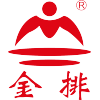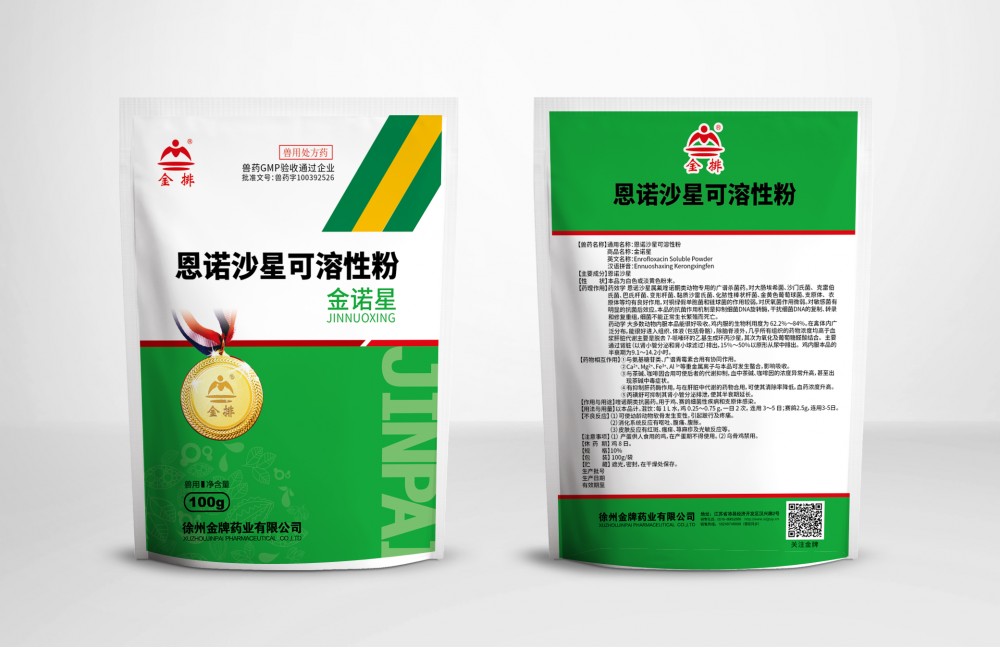Business Type:Manufacturer
Country/Region:China
Ddu Verified
HOT Rank


Enterprise Standard of Xuzhou Jinpai Pharmaceutical Co., Ltd.
We are professional supplier of Mixed feed additive,Veterinary medicated powder,Veterinary powder formulation,Premix feed additive.
Business Type:Manufacturer
Country/Region:China
Ddu Verified
HOT Rank

Generic Name: Enrofloxacin Solution
English Name: Enrofloxacin Solution
Chinese Pinyin: Ennuoshaxing Rongye
Enrofloxacin
PropertiesThis product is a clear, almost colorless to pale yellow liquid.
Pharmacological ActionsPharmacodynamics: Enrofloxacin is a broad-spectrum bactericidal agent belonging to the fluoroquinolone class, specifically for veterinary use. It is highly effective against Escherichia coli, Salmonella, Klebsiella, Brucella, Pasteurella, Actinobacillus pleuropneumoniae, Erysipelothrix rhusiopathiae, Proteus, Serratia marcescens, Corynebacterium pyogenes, Bordetella bronchiseptica, Staphylococcus aureus, Mycoplasma, Chlamydia, and others. It shows weaker activity against Pseudomonas aeruginosa and Streptococcus and minimal effect on anaerobic bacteria. It exhibits a significant post-antibiotic effect on susceptible bacteria. The antibacterial mechanism involves inhibition of bacterial DNA gyrase, interfering with DNA replication, transcription, and repair, leading to bacterial death.
Pharmacokinetics: Enrofloxacin is well absorbed after oral administration in most animals. The bioavailability in chickens ranges from 62.2% to 84%. It is widely distributed in poultry tissues and body fluids (including bones), with drug concentrations in almost all tissues (except cerebrospinal fluid) exceeding plasma levels. Liver metabolism primarily involves deethylation of the 7-piperazinyl group to form ciprofloxacin, followed by oxidation and glucuronic acid conjugation. Excretion occurs mainly via the kidneys (through tubular secretion and glomerular filtration), with 15%–50% excreted unchanged in urine. The elimination half-life in chickens after oral administration is 9.1–14.2 hours.
Synergistic effects may occur when combined with aminoglycosides or broad-spectrum penicillins.
Heavy metal ions such as Ca2+, Mg2+, Fe3+, and Al3+ can chelate with enrofloxacin, impairing absorption.
Concurrent use with theophylline or caffeine may reduce plasma protein binding, leading to abnormally elevated blood concentrations of these substances and potential theophylline toxicity.
Enrofloxacin inhibits hepatic enzymes, potentially increasing blood concentrations of drugs primarily metabolized in the liver.
A fluoroquinolone antimicrobial agent used for bacterial diseases and Mycoplasma infections.
Dosage and AdministrationFor drinking water: 0.5–0.75 mL per 1 L of water.
Adverse ReactionsMay cause cartilage degeneration in young animals, affecting bone development and leading to lameness or pain.
Gastrointestinal effects such as loss of appetite and diarrhea may occur.
Do not use in laying hens producing eggs for human consumption.
Contraindicated in Silkie chickens.
8 days.
Specification10%
